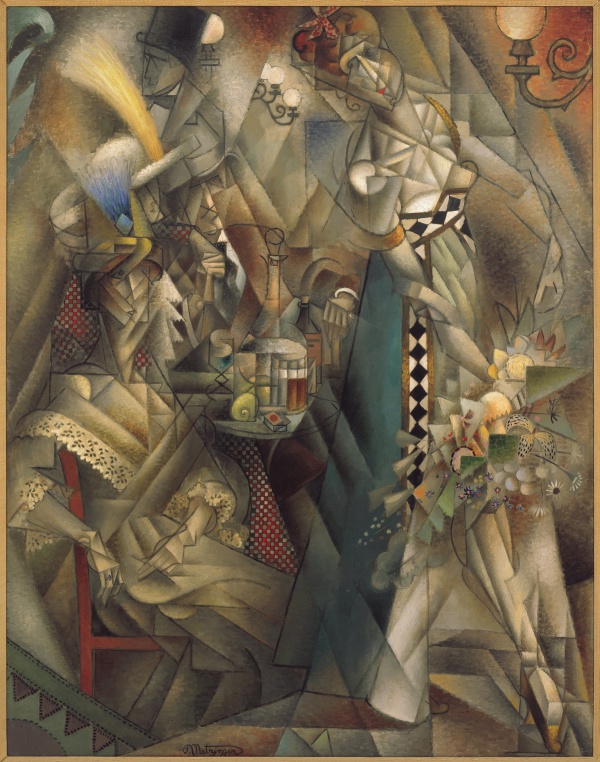Facts About Dancer in a Café
"Danseuse au café" is a distinguished oil painting created in 1912 by the French artist Jean Metzinger. This artwork garnered significant attention when it was displayed at the Salon d'Automne in Paris, a venue renowned for igniting debates with its Cubist exhibitions. The painting portrays a dancer in a café, skillfully merging Cubist techniques with realistic details.
Metzinger's style in this piece is notable for its Divisionist brushwork and mosaic-like cubes, which impart texture and a rhythmic quality to the painting. He adeptly captures the essence of Parisian fashion in 1912, meticulously detailing the clothing and setting.
Metzinger's fascination with fashion reflects the contemporary art trends of his time. French fashion designer Paul Poiret, known for his extravagant parties and innovative designs, significantly influenced both the art and fashion worlds. Poiret's impact, along with that of dance icon Isadora Duncan, resonates within Metzinger's artistic circle.
The painting's dynamic composition and multiple perspectives are hallmark traits of Cubist principles, emphasizing simultaneous representation and a fluid viewpoint. Metzinger's departure from traditional perspectives and his exploration of form and space are aligned with the Cubist theories he developed alongside Albert Gleizes. Their collaborative work, "Du 'Cubisme'" underscores the subjective nature of representation and the interplay of form and color.
When "Danseuse au café" was exhibited at the Salon d'Automne in 1912, it was part of a controversial Cubist showcase that challenged conventional art norms. This event marked a pivotal moment in modern art history, solidifying Cubism as a revolutionary movement.
The painting's provenance includes prominent owners such as Albert Gleizes and collectors like Robert Lebel and the Sidney Janis Gallery. Its journey through these collections highlights its significance in the world of modern art and the history of Cubism.

 Canada
Canada